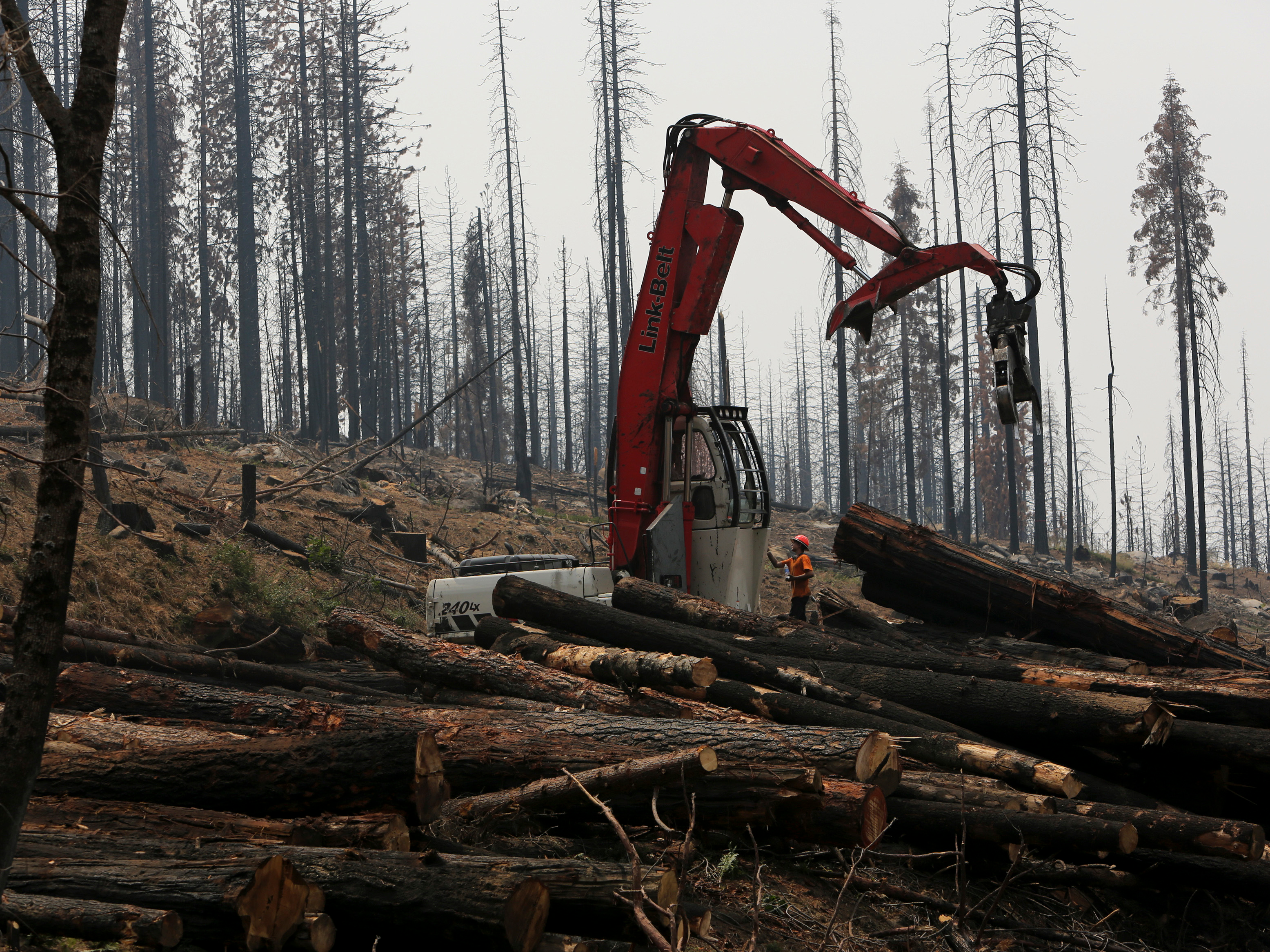- Human activity has drastically changed the planet, particularly since the Industrial Revolution.
- Deforestation, human-driven climate change, and pollution are just some of the ways our species has transformed planet Earth.
- The consequences of those impacts are becoming increasingly clear. Ice in Greenland and Antarctica is melting rapidly, oceans are warmer than ever before, and four of the last five years were the hottest on record.
- Animals’ natural habitats are also shrinking. In 50 years, 1,700 species of amphibians, birds, and mammals will face a higher risk of extinction than they do today.
- Visit Business Insider’s homepage for more stories.
There are around 7.7 billion people on Earth today. By the year 2100, there could be around 11.2 billion.
Already, the impact we’ve had on Earth is becoming more profound and irreversible.
Nowhere is that transformation more apparent then in before-and-after comparisons of pictures taken in the same spot. Such photos show dying coral reefs, melting glaciers, and retreating forests in ways both striking and damning.
Since today is the 49th annual Earth Day – a global event aimed at increasing worldwide awareness about how humans are changing the planet – we’ve juxtaposed some of these images below.
In some cases, the two photos were taken as much as 50 years apart; in other cases, only a decade or so passed in between.
Melting glaciers are some of the most visually dramatic effects of a warming planet. Here's Alaska's Muir Glacier as pictured in August 1941 (left) and August 2004 (right).

This pair of images shows the retreat of Alaska's Pedersen Glacier from 1917 (left) to 2005 (right).

Glaciers that aren't in the Arctic are retreating, too. Here's Peru's Qori Kalis Glacier in 1978 (left) and again in 2011 (right).

These aerial images document melting ice in Ecuador, from March 1986 (left) to February 2007 (right).

Even in the last decade, the changes have been striking. The top photo shows the Rhone Glacier in Switzerland last year, while the bottom shows how much more ice there was in 2009.

Source: Reuters
Glaciologists think that half of Switzerland's small glaciers — and the streams they feed — will be gone within the next 25 years.

Source: Reuters
Drastic changes can even happen within months. These composite photos show the melting of the Sólheimajökull Glacier in southern Iceland. Just six months passed between the top and bottom photographs.

Source: Business Insider
Elsewhere in Switzerland, the Matterhorn mountain in saw a marked drop in snowpack between August 1960 (left) and August 2005 (right).

Deforestation, often from logging or to clear room for agriculture, is another highly visible human-driven change. Starting in the 1970s, NASA began using satellite images to document deforestation in national parks around the world. Here's Mount Elgon National Park in Uganda in 1973 (left), compared with the park in 2005 (right).

This pair of images shows how Mabira Forest in Uganda changed over just five years, from 2001 (left) to 2006 (right).

Every year, more than 18 million acres of forest disappear worldwide. That's about 27 soccer fields' worth every minute. More deforestation is visible in Kenya's Mau Forest in these photos from January 1973 (left) and December 2009 (right).

Source: World Wildlife Fund
A similar contrast is visible in these images of Kenya's Lake Nakuru National Park, shown here in 1973 (left) and 2000 (right).

The Baban Rafi Forest in Niger also shrank from 1976 (left) to 2007 (right).

Deforestation is a major issue in South America as well. The Atlantic Forest in Paraguay, seen here, shrank significantly between 1973 (left) and 2008 (right).

This area of Rondonia, Brazil was heavily deforested between 1975 (left) and 2009 (right).

The loss of Argentina's Salta Forest is starkly visible in this pair of photos from 1972 (left) and 2009 (right).

In the 1980s, NASA also started documented shrinking bodies of water and rivers across the globe. This photo of Great Sand Dunes National Park in the US state of Colorado shows how much of the lakes there disappeared between 1987 (left) and 2011 (right).

The same goes for the Elephant Butte Reservoir in the state of New Mexico. Here it is in 1994 (left) and again in 2013 (right).

The Aral Sea in Central Asia shrunk drastically between 2000 (left) and 2014 (right).

Argentina's Mar Chiquita Lake has also gotten significantly smaller. The image on the left is from 1998, and the lake is shown in 2011 on the right.

Iran's shrinking Lake Urmia is pictured below in July 2000 (left) and again in the same month in 2013 (right).

Some rivers have been shrinking as well — these images compare waterways in Arizona and Utah in March 1999 (left) and May 2014 (right).

Coral reefs have been negatively affected, too. Higher ocean temperatures cause corals to expel the algae living in their tissues and turn white — what's known as coral bleaching. This causes the reef to die, as seen here on the right.

